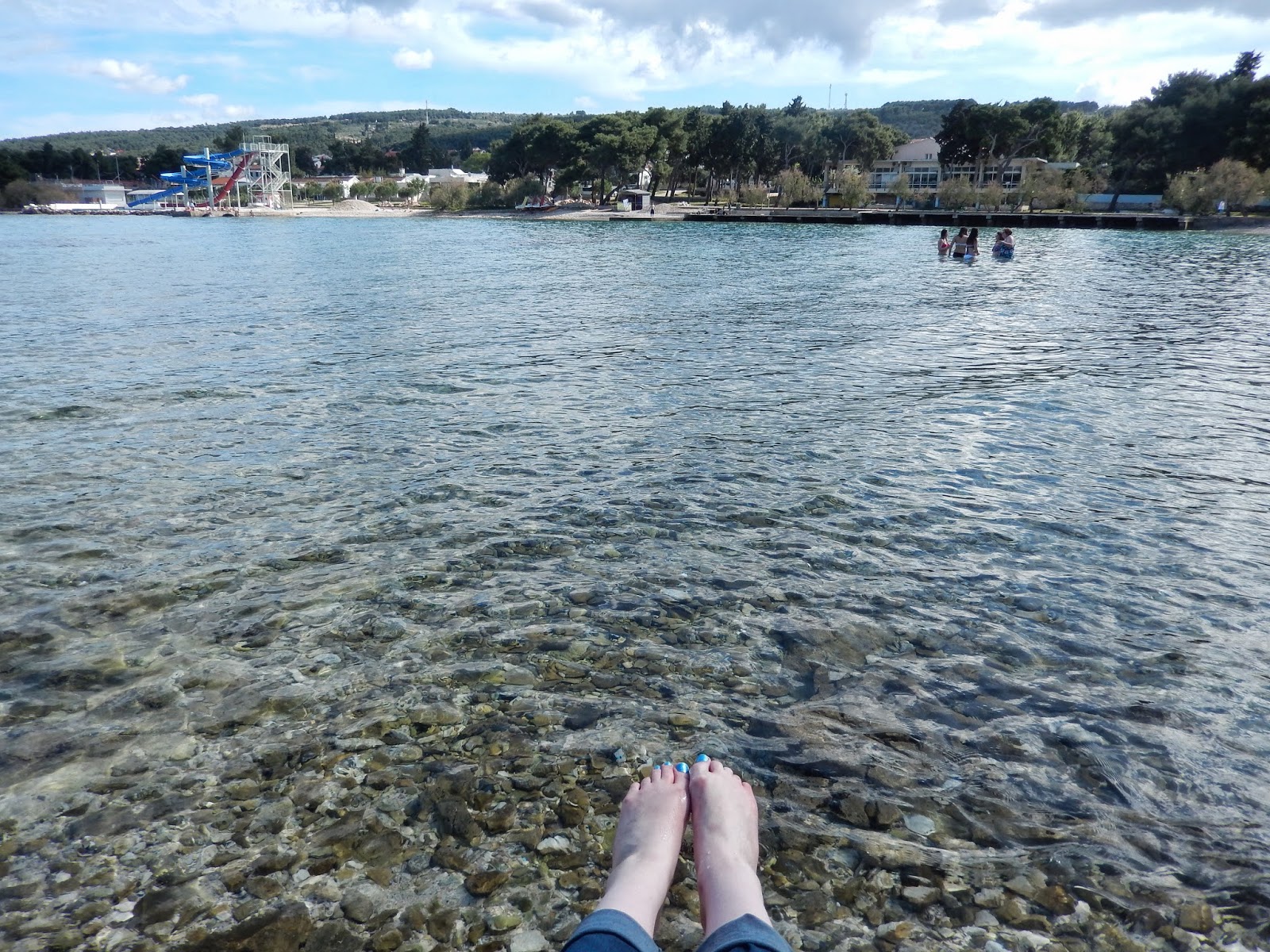Five of my friends and I boarded a coach bus last Thursday evening with twenty-five other American students for a long weekend in one of Europe's least-discovered - but fast-growing - destinations: the beautiful city of Split on Croatia's pristine Dalmatian coast. It's almost a straight shot eastward from Rome, but due to the minor presence of the Adriatic Sea, we instead curved northward through Florence and Venice and skirted the coast through Slovenia and Croatia. We booked the trip with the student-oriented tour company Bus2Alps and drove through the night, which could have been more comfortable but ended up being worth the cramped necks and un-stretched legs. Our hostel was less than two minutes' walk from the waterfront and in the heart of the historic center, so our excitement got the best of us and after a quick breakfast and change of clothes we headed out to explore.
Like much of Eastern Europe, especially in the Balkans, Croatia has a checkered history of occupation, leading to a very strange concept of cultural identity that almost seems to be lacking altogether. Like the rest of the Mediterranean, it was once part of the Roman Empire; in fact, the city of Split was built in and around the remains of the Roman emperor Diocletian's palace, who apparently enjoyed the natural splendor of the area as much as modern tourists do. The Austro-Hungarian Habsburg dynasty ruled beginning in the 16th century; it then became part of the Kingdom of Yugoslavia during World War I, was established as a fascist puppet state during World War II, and eventually seceded from Second Yugoslavia, declaring independence in 1991. Therefore, it's a unique blend of Mediterranean culture - shared by countries like Italy and Spain - and Eastern European; we saw almost as much Italian as we saw English on menus and signs, and most restaurants offered seafood and Italian cuisine.
Friday, after our arrival, we headed to Diocletian's Palace and explored the unique conglomeration of ancient ruins and modern enterprise that it has become; truly, the city has developed itself within and around it. We explored nearby markets and enjoyed a delicious Italian-influenced lunch - reveling in the great exchange rate between the euro and the Croatian kuna - before exploring the remaining lower levels of the Palace. Mold and moss grew in abundance on the damp brick walls, but the structure remained remarkably intact; but for the presence of some suspiciously foreboding pigeons, it was a pleasant trip to the ancient Mediterranean outside the "usual" Roman fare.
The inside of Diocletian's Palace, which has been filled with shops and restaurants in addition to ruins
One of the ancient ceilings of the Palace's lower levels, covered in green moss!
We rested that afternoon, still recovering from our fractured night's sleep, and ventured out for more Italian-inspired food for dinner. The next morning we got up to explore the beautiful vista from atop the hill in a nearby park, where we enjoyed spectacular views of the city and the sea. Behind the flat coastal plain on which Split was sprawled, long ranges of rocky mountains stretched parallel to the shoreline; it was rugged and looked remarkably untouched, unlike the hills and mountains of Italy which - though lovely in their own right - are always dotted with towns and farms. We didn't have long to spend in the park, for we had to return to the city center to catch a ferry for our island hopping tour with Bus2Alps.
Beautiful Split, with the sea on one side and the mountains on the other
Split from offshore
The mainland from Brač
One of the villages on Brač
A harbor on Brač
Crystal clear water!
FREEZING (but worth it)
Waterfalls at Krka National Park
Another set of falls on the River Krka
Excited to be in Slovenia!













No comments:
Post a Comment